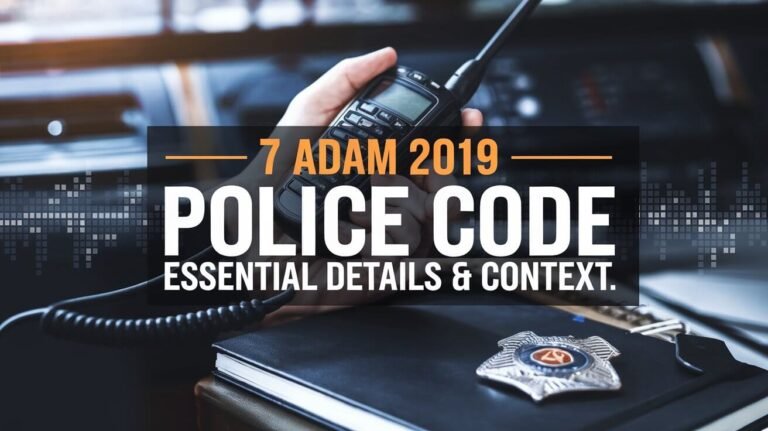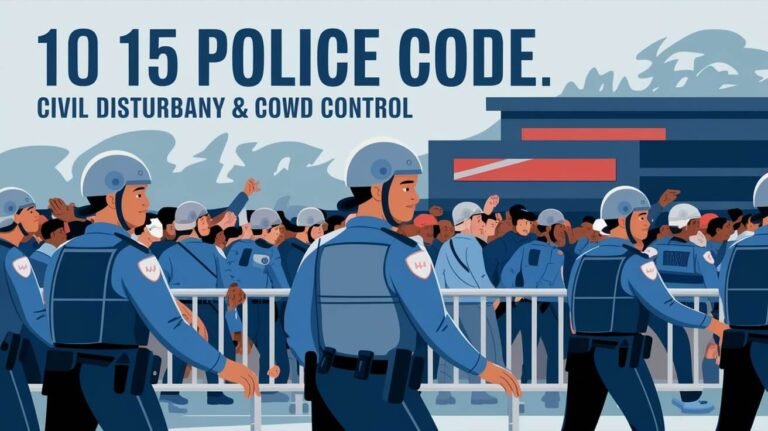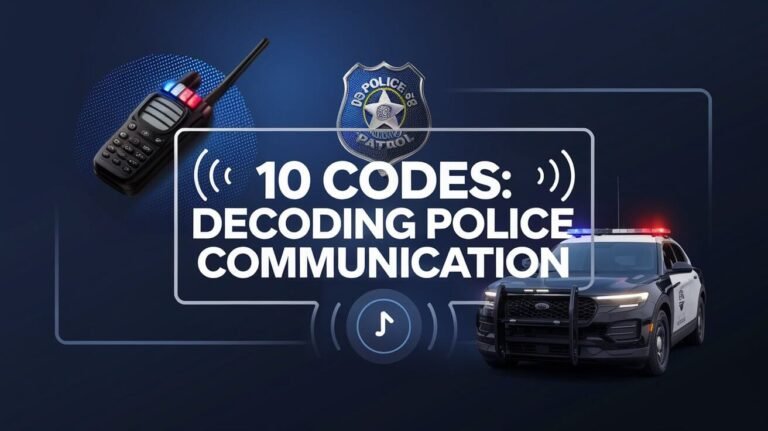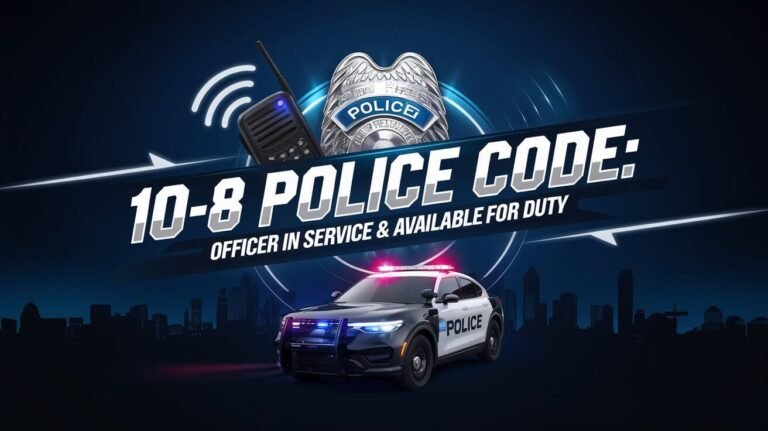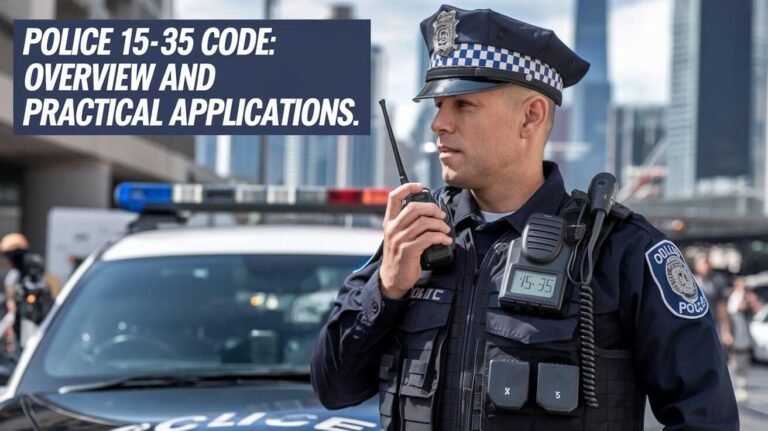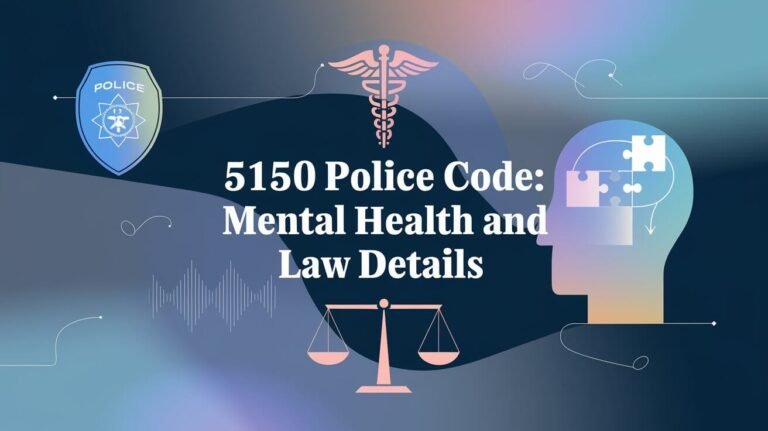10 10 Police Code: Common Uses and Meaning
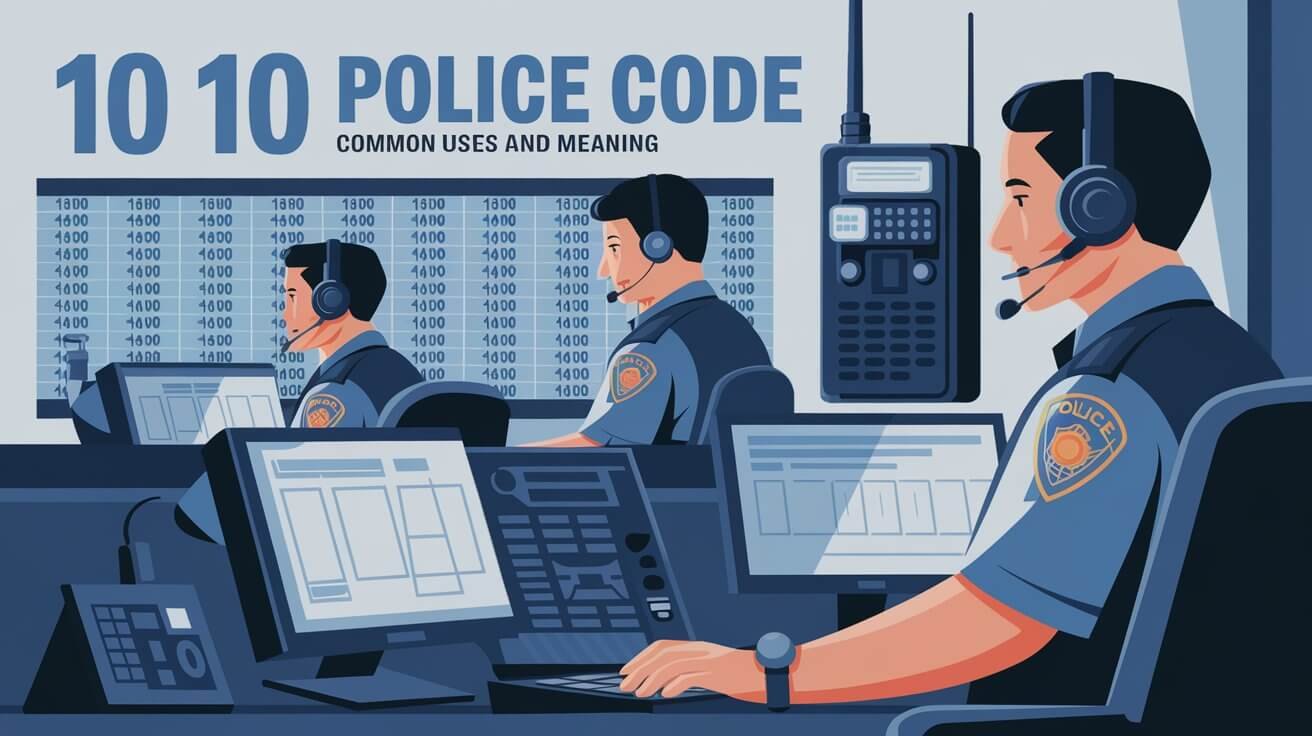
The 10-10 Police Code is key in radio communication for law enforcement in the U.S. It uses numbers to quickly share important information. This includes simple confirmations and urgent emergencies. It helps officers and dispatchers talk clearly, making everyone safer.
Within the 10-10 Police Code, there are many signals for different needs. For example, 10-4 means “Acknowledgment (OK),” and 10-33 is for “Emergency.” These codes help agencies work together smoothly. They share vital info and handle emergencies well.
Origins and Evolution of Police Radio Codes
Police have used codes to talk to each other on public radio for over 80 years. The APCO 10 Signals started in 1937. The Association of Police Communications Officers (APCO) made this system to make radio talks clearer.
Birth of APCO Codes
Charles Hopper, with the Illinois State Police, created the police ten codes between 1937-1940. This early system was designed to make messages shorter and more secret.
Standardization Efforts
In 1955, the 10-Codes became a standard for police across the U.S. The Association of Public-Safety Communications Officials-International (APCO) made them even more standard in 1974. But, different places use codes in different ways, making them hard to understand everywhere.
Modern Adaptations
The police code system has changed over time. Some police now use regular English to talk on the radio for better understanding. In 2005, FEMA started to say it’s better not to use ten-codes because they mean different things in different places.
Even so, the 10-code system is very common. Codes like 10-4 (acknowledgment) and 10-20 (location) are almost everywhere. But, some police have started using newer ways to talk on the radio.
10 10 Police Code: Core Functions and Applications
The 10-10 police code means different things in different places. It can mean a “fight in progress” or “off duty” in some areas. But, its main purpose is always the same: to keep messages short, keep officers safe, and work more efficiently.
These codes are used a lot, like in traffic stops and emergencies. For example, “10-4” means “message received,” and “10-20” tells where an officer is. “10-33” is for emergencies, and “10-52” means an ambulance is needed.
“10-99” is for when an officer is in trouble and needs help fast. This shows how vital quick action is for officer safety. These police code interpretation and radio communication protocols are key for good law enforcement signals.
| Code | Meaning | Application |
|---|---|---|
| 10-4 | Acknowledgment | Routine communication |
| 10-10 | Fight in progress | Emergency situation |
| 10-20 | Location | Coordinated response |
| 10-33 | Emergency | All units stand by |
| 10-52 | Ambulance needed | Medical emergency |
| 10-99 | Officer down | Critical situation |
Critical Emergency Response Codes
In the high-stakes world of law enforcement, emergency response codes are key. They ensure quick communication and action in critical situations. These codes help officers send important info and get help fast when needed.
Priority One Signals
“10-33” (emergency) and “10-80” (chase in progress) are urgent codes. They call for an immediate response from nearby units. This means lights, sirens, and extra alertness. Quick action can save lives.
Officer Safety Alerts
Keeping officers safe is a top priority. Codes like “10-32” (person with a gun) or “10-78” (need assistance) alert others to dangers. They prompt a quick response to protect officers.
Emergency Assistance Protocols
When officers need help fast, they use codes like “10-13” (weather/road report) or “10-45” (bomb threat). These ensure the right help gets there quickly. Quick aid is key to handling dangerous situations.
These critical emergency response codes help law enforcement. They improve officer safety, coordinate responses, and protect communities better.
Common Daily Operation Codes
Routine police codes, or “10 codes,” are used by law enforcement for daily talks. They help share information quickly and keep things running smoothly. These codes mean different things in different places, but they’re a common way for police to talk.
Some common 10 codes include:
- 10-8: In service
- 10-7: Out of service
- 10-6: Busy
- 10-5: Relay
- 10-21: Call by phone
- 10-22: Disregard
- 10-23: Arrived at scene
These codes help police talk and work together every day. They let officers know their status, ask for help, and plan their work. Even though the exact meaning can change by area, they’re a key part of police work.
| Code | Meaning |
|---|---|
| 10-0 | Caution |
| 10-31 | Crime in progress |
| 10-50 | Accident (fatal, personal injury, property damage) |
| 10-55 | Suspected DUI |
| 10-61 | Isolate self for message |
| 10-70 | Fire |
| 10-71 | Advise nature of fire |
| 10-91 | Pick up prisoner/subject |
| 10-96 | Mental subject |
| 10-99 | Wanted/stolen indicated |
These codes are the heart of police communication every day. They help officers work together well. Even though they might mean different things in different places, they’re a shared language for police work.
Vehicle and Traffic Related Codes
Law enforcement uses traffic codes to manage situations on the road. These “10-codes” are a standard way for police to share important info quickly. They help officers communicate clearly and efficiently.
Traffic Stop Procedures
Officers use codes like “10-61” to start a traffic stop. They use “10-38” for stopping a suspicious vehicle. These codes keep dispatch and other officers updated, ensuring a coordinated response.
Accident Response Signals
At accidents, officers use “10-52” to call for an ambulance. They use “10-54” for hit-and-run reports. These codes ensure the right help arrives and the right info is shared.
Vehicle Registration Checks
Officers use “10-27” for license info and “10-28” for vehicle registration. These checks help determine if a vehicle is stolen or if it’s being driven legally.
| Code | Description |
|---|---|
| 10-27 | License Information |
| 10-28 | Vehicle Registration Information |
| 10-50 | Accident |
| 10-61 | Traffic Stop |
| 10-38 | Stopping Suspicious Vehicle |
| 10-52 | Ambulance Needed |
| 10-54 | Hit and Run |
These traffic codes are key to the 10-code system used by police. They help officers respond quickly and effectively to traffic issues. This ensures public safety and efficient use of resources.
Communication Status and Radio Protocol
In law enforcement, clear and efficient radio protocols are key. Codes like 10-1 (poor reception) and 10-2 (good reception) help officers and dispatchers talk well. Using 10-9 (repeat) and 10-12 (stand by) keeps communication smooth.
The “10 codes” were first used in the 1930s by Charles “Charlie” Hopper. They are now a big part of emergency services talk. Groups like the Association of Police Communications Officers-International (APCO) help keep these codes standard.
But, there’s a move to plain language in emergency talks. The National Incident Management System (NIMS) and the US Department of Homeland Security are leading this change. They want clear talk for safety over codes.
| Code | Meaning |
|---|---|
| 10-1 | Poor reception |
| 10-2 | Good reception |
| 10-3 | Stop transmitting |
| 10-9 | Repeat |
| 10-12 | Stand by |
Even though 10 codes are common, tech changes and the need for clear talk are pushing for simpler language. As emergency services grow, keeping radio talk clear and efficient is vital for safety and success.
Location and Movement Codes
In law enforcement, police codes are essential for communication. They help officers work together quickly and efficiently. Location and movement codes are important for keeping everyone informed and directing actions.
These codes, starting with “10-,” are a clear and standard way to share where officers are and where they need to go. They are vital for good policing.
Position Reporting
Location codes help with position reporting. Officers use signals like 10-23 (arrived at scene) or 10-97 (arrived at scene) to tell dispatchers and others where they are. This lets everyone track who is where, making sure help gets to where it’s needed fast.
Scene Arrival Updates
Scene arrival updates are similar to position reporting. They use codes like 10-23 to say an officer has arrived at a scene. This lets everyone know the situation and helps coordinate responses.
Directional Commands
Police codes also give directional commands. These tell officers where to go or what to do next. Dispatchers and supervisors use these codes to make sure everyone is in the right place.
They might say “move to the north side of the building” or “proceed eastbound on Main Street.” This helps keep the response organized and effective.
Dispatch and Response Coordination
Effective police operations need smooth dispatch and response coordination. Police officers use special codes to manage information and track each other’s whereabouts. This is true for both emergencies and everyday tasks.
Dispatch teams use codes like 10-5 (relay) or 10-21 (call by phone) for clear communication. These codes help share information between officers and dispatch centers. For tracking officer availability, they might use 10-6 (busy) or 10-8 (in service).
Codes like 10-25 (report in person) or 10-17 (meet complainant) help plan officer movements. This makes sure first responders work well together in urgent situations. These codes help manage police resources better and improve emergency responses.
The Association of Public Safety Communication Officials (APCO) has helped standardize police radio codes. This ensures better coordination across different areas. But, the meanings and uses of these codes can differ between police departments. This shows the importance of ongoing training and communication among law enforcement.
Regional Variations in Code Systems
The 10-code system is key in law enforcement talk, but it varies a lot in the U.S. For example, “10-10” can mean different things in different places. It could be “fight in progress,” “negative,” or “off duty,” based on local rules. Some places even use special codes like 10-106 (secure) or 10-105 (follow-up investigation).
Knowing the police codes, jurisdiction-specific signals, and code variations in your area is vital. It’s important for clear communication, which is critical in emergencies. Officers must understand the local code systems well to do their job effectively.
| Code | Meaning | Jurisdiction |
|---|---|---|
| 10-10 | Fight in progress | New York Police Department (NYPD) |
| 10-10 | Negative | Los Angeles Police Department (LAPD) |
| 10-10 | Off duty | Chicago Police Department (CPD) |
| 10-106 | Secure | Boston Police Department (BPD) |
| 10-105 | Follow-up investigation | Miami-Dade Police Department (MDPD) |
Law enforcement agencies are always changing, making it more important to have standard code variations. By knowing the local police codes and jurisdiction-specific signals, officers can communicate better. This helps them respond quickly and safely, improving public and officer safety.
Conclusion
The 10-code system is key in law enforcement talks, even with local changes. It makes messages short, clear, and easy to understand. Some places are using simple language, but 10-codes are staying important for their speed and history.
10-codes help police talk clearly and quickly, making them very useful. They keep radio talks organized and safe. As tech and ways of talking change, 10-codes might too. But their main values of being fast, clear, and traditional will always be important.
The 10-code system is a big help for police in the U.S. It has shown its worth in many ways. As police work changes, 10-codes will keep being used. They help keep the standards and traditions that make policing effective.

